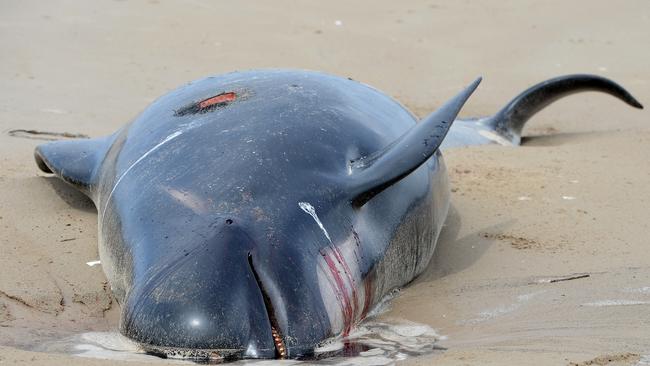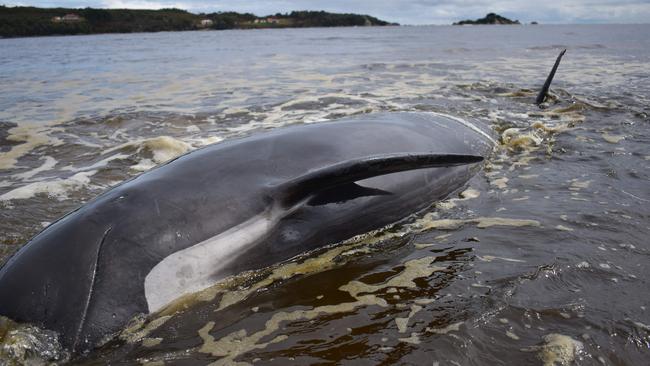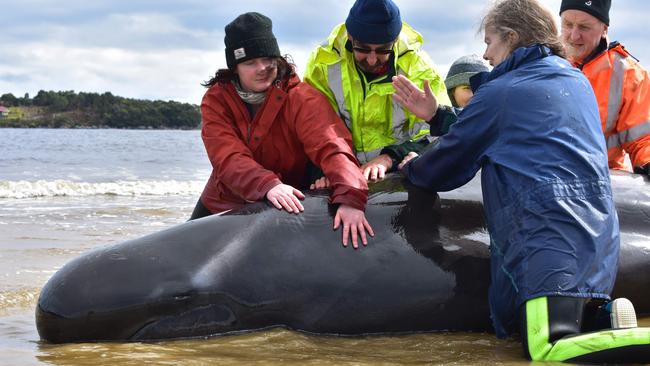Sad revelation about 250 dead pilot whales from mass stranding on Tasmania’s West Coast
Tasmania’s top scientists have collected data from the whales that died in last week’s mass stranding, revealing some sad facts about the creatures.
Tasmania
Don't miss out on the headlines from Tasmania. Followed categories will be added to My News.
- Tasmanians warned of ‘predatory lenders’ amid rule changes
- Govt forced to interfere as council can’t block development
MOST of the whales who died after becoming stranded in Strahan’s Macquarie Harbour last week were mothers and their young, scientists from the Tasmanian Museum and Art Gallery have determined.
Two scientists from TMAG’s Zoology team travelled to the West Coast to collect data from the 350 whales that did not survive the massive rescue effort after 470 long-finned pilot whales became stuck in the harbour’s shallow waters.

Scientists Belinda Bauer and Kirrily Moore assessed and documented over 250 deceased whales, taking tissue samples, measuring the mammals. determining their sex and assessing their reproductive states.
Most of the dead whales were female; many lactating. Forty were juveniles.
“This is not unusual in pilot whale pod structure where pods have close matrilineal relationships and adult females (mothers and grandmothers) tend to outnumber adult males. Of the 88 adult males sampled, the largest was just over six metres long,” TMAG said.
One heavily pregnant bottlenose dolphin was also discovered deceased.

Bottlenose dolphins and pilot whales are known to cohabit and forage together at sea and it is most likely that this animal died as part of the larger mass stranding.
Ms Bauer and Ms Moore described the scale of the event as overwhelming and said working with many dead animals in remote locations and bad weather had been tough.
The tissue samples collected have been stored in ultra low-temperature freezers at TMAG’s Rosny Collections and Research facility to preserve the DNA.

That DNA will be available to researchers from around the world who have already expressed interest in studying them.
Material has also been collected to assess the internal injuries sustained by animals which may provide insights into the cause of the stranding.
“While this is undoubtedly a tragic incident, our best hope is that the data and samples we collect will help provide insights into these incidents, and holding physical evidence of the event in long-term storage means that we can revisit and answer questions about whale standings with technologies that may not even exist yet,” Ms Bauer said.


